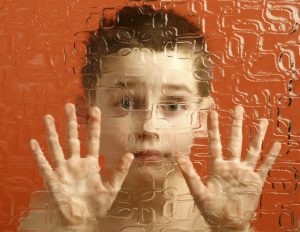
By Lisa Pecos
Most children with autism don’t get a final diagnosis until the age of four. There is no specific medical test or blood test to diagnose autism the way you would a medical condition such as cancer or diabetes. Medical professionals base their diagnosis on a child’s behaviour and development. Since children without the condition can exhibit many of the same issues, getting a diagnosis is often delayed. Even so, the U.S. Centers for Disease Control and Prevention (CDC) say that a diagnosis by an experienced professional by the age of two can be very reliable.
As a parent, you’ll be able see signs that something is different about your child long before that, often as early as by their first birthday. Knowing what signs to look for can help you get a diagnosis earlier and therefore treatment can begin sooner, which has been shown to improve the outcome in those with autism.
The following are early signs of autism that should be discussed with the child’s doctor.
12 Months and Under
Before the age of 12 months, keep an eye out for signs that your child isn’t meeting common developmental milestones that they should be. Talk to your doctor if your child:
- Doesn’t make eye contact or appears to look through you
- Doesn’t smile
- Doesn’t show interest in faces
- Doesn’t always respond to their name or react to sounds even though the hearing seems fine at other times
- Doesn’t try to “talk”
- Doesn’t enjoy being touched
- Doesn’t use common gestures, like reaching for things they want
- Doesn’t show interest in typical baby activities and games
12 to 24 Months
By this age your child should be using certain gestures and beginning to communicate better. Signs of autism at this stage can include:
- Not using gestures such as nodding yes or shaking their head no or pointing to what they want
- Not expressing interest in objects that babies generally like, such as toys
- Appears to be in his/her own world and able to tune out everyone around them
- Loses verbal skills and no longer babbles or speaks at all
- Loses interest in people and appears to lose social skills
- Walks on their toes
- Doesn’t walk at all
2 Years of Age and Up
By this age the differences in your child will become even more apparent. You may notice that your child:
- Has trouble expressing themselves, participating in a conversation, or even speaking at all
- Doesn’t appear to understand what’s being said to them, such as not responding to their own name
- Expresses emotions inappropriately, such as by screaming or laughing at inappropriate times
- Has unusual speaking patterns, such as speaking in a very flat tone or repeating certain words
- Doesn’t engage in pretend or imaginative play
- Plays with their toys in an unusual way, such as lining them up or counting them rather than playing with them
- Prefers to play alone and have very little interest in other children
- Appears to have behaviour issues, such as being uncooperative or aggressive
- Doesn’t like to stray from routines and has a strong reaction to change
- Engages in repetitive behaviour, such as flapping his/her hands
- Is extremely sensitive to sounds or light
Your child’s doctor can provide you with more information on autism spectrum disorder.